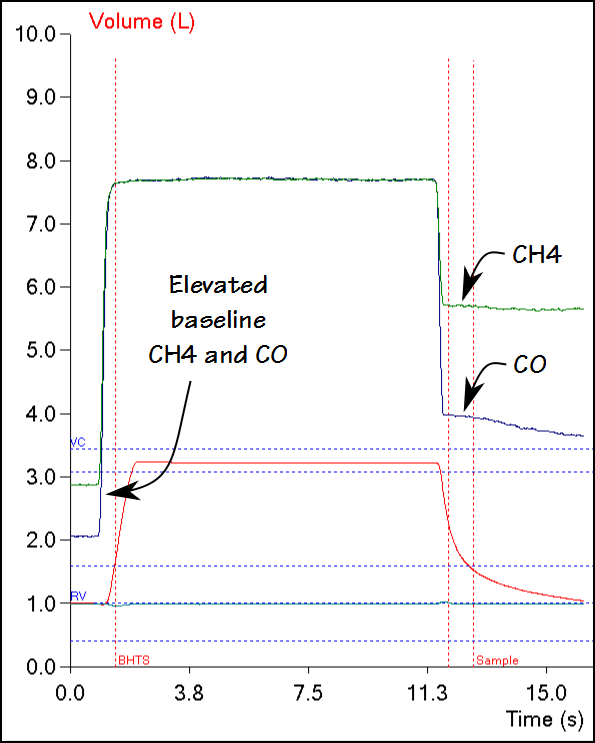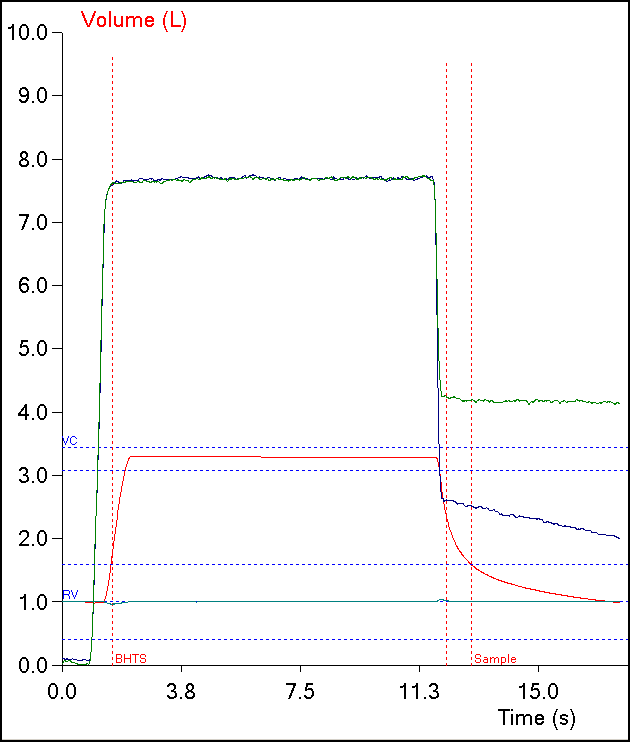The European Respiratory Society has just published the first standards for DLNO testing. This is a signal that DLNO is moving from a research setting into routine clinical testing. Although it is unlikely that most PFT labs will immediately jump into DLNO testing, the standard is still interesting because of an extensive discussion of DLNO, DLCO, DMCO and Vc measurements and physiology. The DLNO standards (and their supplementary material) are open-access and can be downloaded from the European Respiratory Journal.
DLNO is performed in the same manner as a single-breath DLCO and it is specifically recommended that DLCO and DLNO tests be performed simultaneously. There are however, specific test system requirements based both on the properties of NO and on the two types of NO analyzers:
- Nitric Oxide reacts with oxygen to form NO2 and at the levels used for DLNO testing (40-60 ppm) does so at a rate of approximately 1.2 ppm per minute. DLNO test gas is therefore usually stored as 400-1200 ppm NO in N2 and mixed into the DLCO test gas mixture (0.3% CO, 21% O2) ≤2 min before the DLCO/DLNO test. This would seem to require that the DLCO/DLNO test gas mixture to be held in a reservoir of some kind and to preclude the use of a demand valve but this was not specifically discussed. Because of uncertainties that occur when mixing the DLCO/DLNO gas mixture and in how long the mixture may be held in the reservoir the inspired NO concentration must also be measured immediately before the DLCO/DLNO test is performed.
- The type of NO gas analyzer will determine how the expiratory gas concentrations are measured. Chemiluminescent analyzers usually have a response time on the order of ≤70 msec, and for these reasons can be used to perform a real-time analysis of exhaled air. Chemiluminescent analyzers are expensive however, and can add significantly to the cost of a test system. Electrochemical cells are significantly less expensive but have a response time on the order of 10 seconds and are therefore suitable only to test systems that mechanically collect an alveolar sample.


